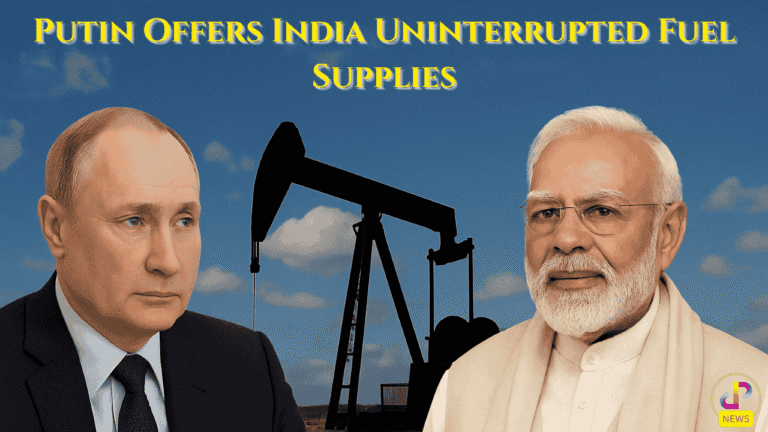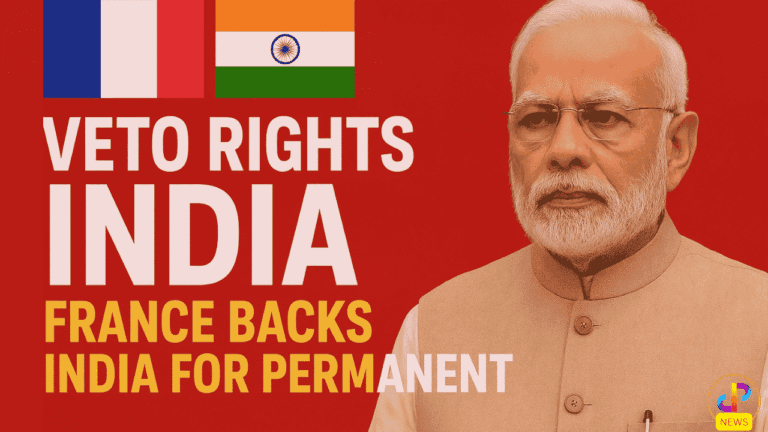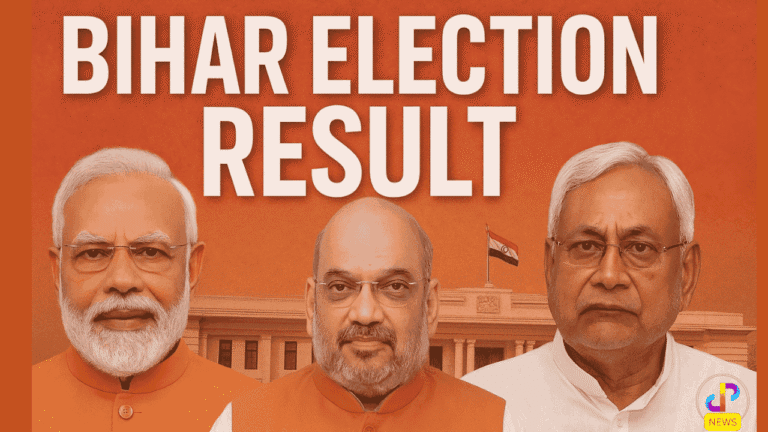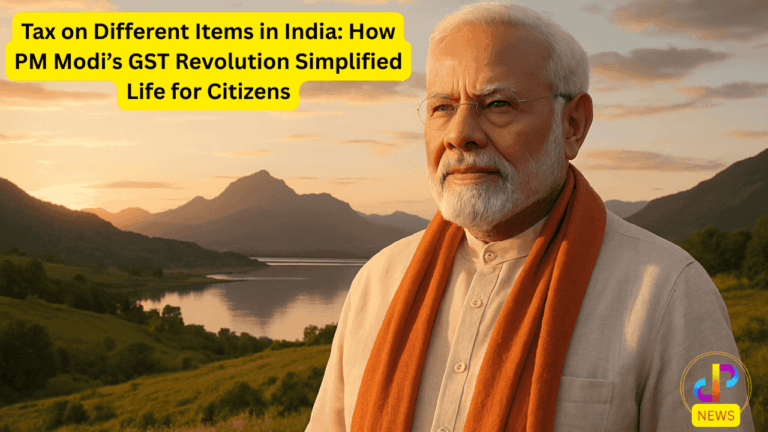BRICS Nations to Trade in Indian Rupees: A Strategic Shift or Viral Rumor?
Overview – Trade in Indian Rupees:
Social media posts and viral graphics claim that BRICS countries — Brazil, Russia, India, China, and South Africa — will now settle 100% of their trade in Indian Rupees (INR) instead of the US dollar. The alleged move, hailed as a “historic de-dollarisation” step, suggests that India is leading the charge to weaken dollar dominance in global trade.
However, a closer look reveals that while the Reserve Bank of India (RBI) has indeed taken steps to promote INR trade through Special Rupee Vostro Accounts (SRVAs), there is no official circular mandating BRICS members to abandon the dollar completely.
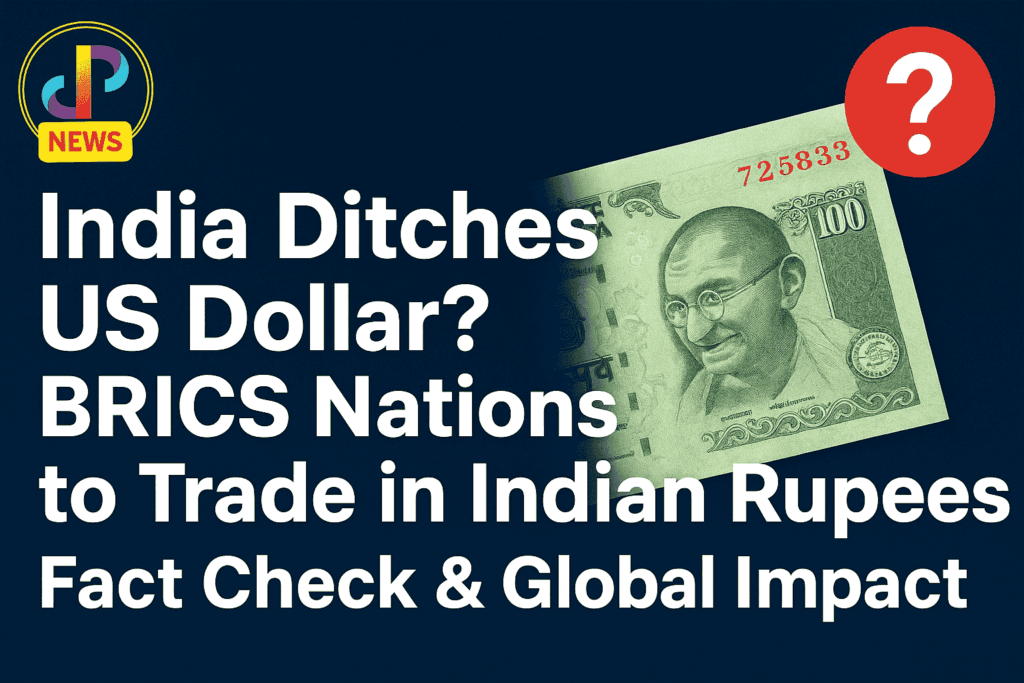
Background – Push for Rupee in Global Trade:
The push to expand trade in Indian Rupees gained momentum after the US, under President Donald Trump, imposed 50% tariffs on Indian exports in August 2025. This triggered calls in India and BRICS nations to adopt alternative trade settlement systems.
In its latest circular (dated August 5, 2025), the RBI allowed banks to open SRVAs without prior approval. This mechanism enables exports and imports to be invoiced and settled directly in rupees, bypassing the dollar for specific transactions.
Industry experts note that India has already signed bilateral trade agreements with Russia, the UAE, and Maldives, enabling INR settlements. This reduces foreign exchange risks, transaction costs, and dependency on the dollar.
Fact Check – Has India Ditched the US Dollar?
Despite viral claims, India has not completely abandoned the dollar. The Ministry of External Affairs (MEA) clarified on August 14, 2025, that de-dollarisation is not part of India’s financial agenda.
MEA spokesperson Randhir Jaiswal stressed that India’s goal is not to dethrone the dollar but to diversify trade mechanisms. External Affairs Minister S. Jaishankar also confirmed that India opposes the idea of a common BRICS currency, instead preferring local currency settlements on a case-by-case basis.
Thus, while India is expanding rupee-based settlements, the US dollar remains central to international trade.
Economic Outlook – Benefits of INR Trade:
According to economists, greater acceptance of the rupee in international trade could:
Reduce transaction costs by avoiding dollar conversion.
Strengthen the rupee’s global position.
Provide flexibility to Indian businesses amid US tariff threats.
Encourage partner nations to diversify trade away from dollar dependence.
However, experts caution that INR-based trade is still limited in scale and depends heavily on India’s macroeconomic stability.
Global Reaction – BRICS and Beyond:
Brazilian President Lula recently suggested that BRICS nations explore a non-dollar trade mechanism. Meanwhile, China has backed the idea of currency diversification, though India has resisted a unified BRICS currency proposal.
Reports indicate that several Asian, African, and Latin American countries have shown interest in SRVA-based trade, giving India new leverage in global commerce.
Final Thoughts – Trade in Indian Rupees:
The viral claim that BRICS nations will exclusively trade in Indian Rupees is misleading. While India is indeed pushing INR-based trade settlements through SRVAs, the dollar has not been sidelined.
What’s clear is that India is taking steady steps toward currency diversification, reducing reliance on the US dollar, and boosting the global acceptance of the rupee. Whether this marks the beginning of a true de-dollarisation wave or remains a limited mechanism will depend on how BRICS and other nations adopt it.
🎯 Stay Ahead with Digital Preeyam News – Your Trusted Source for Global Trade & Strategic Finance Updates:
🌍 At Digital Preeyam News, we deliver more than just headlines:
✅ Fact-checking viral claims about BRICS & global trade shifts
✅ Expert insights on currency diversification and INR’s global role
✅ Exclusive coverage of US-India tariff wars and their impact on world markets
📩 Subscribe Now for India’s most reliable news on global finance, trade policy, and international diplomacy — only at Digital Preeyam News.
Social Media Profile:
❓Frequently Asked Questions (FAQs):
What does trade in Indian Rupees mean?
Answer: Trade in Indian Rupees (INR) means settling international export and import transactions directly in rupees instead of converting payments into US dollars or other foreign currencies.Has India officially mandated BRICS nations to trade only in rupees?
Answer: No. While the Reserve Bank of India (RBI) has simplified the use of Special Rupee Vostro Accounts (SRVAs) for rupee trade, there is no official mandate requiring BRICS nations to trade exclusively in rupees.What are Special Rupee Vostro Accounts (SRVAs)?
Answer: SRVAs are designated accounts maintained by foreign banks with Indian banks, allowing trade settlements in Indian Rupees for exports and imports between India and partner countries.Is this move part of India’s plan to replace the US dollar?
Answer: No. The Ministry of External Affairs (MEA) clarified that de-dollarisation is not part of India’s financial agenda. Instead, India aims to diversify trade mechanisms and reduce dependency on a single currency.Why is India promoting trade in Indian Rupees now?
Answer: India is expanding rupee trade settlements to reduce transaction costs, strengthen the rupee globally, and mitigate risks from US tariffs and currency fluctuations.Which countries are currently trading with India in rupees?
Answer: Apart from BRICS members, countries like Russia, the UAE, and Maldives have signed agreements with India to settle trade transactions in rupees through SRVAs.Does this mean the US dollar will lose dominance in global trade?
Answer: Not immediately. The US dollar remains the dominant global currency, but India’s move signals a gradual shift toward currency diversification and broader acceptance of local currencies in trade.

